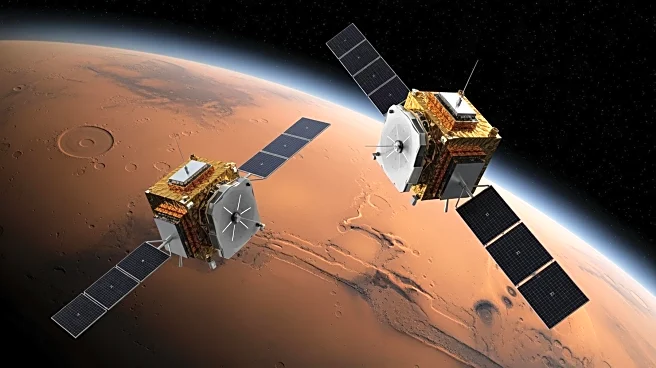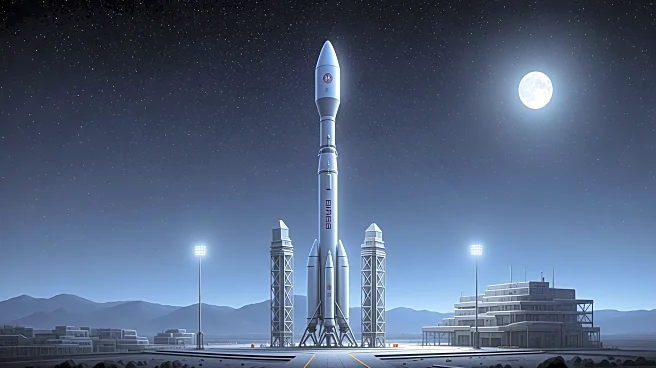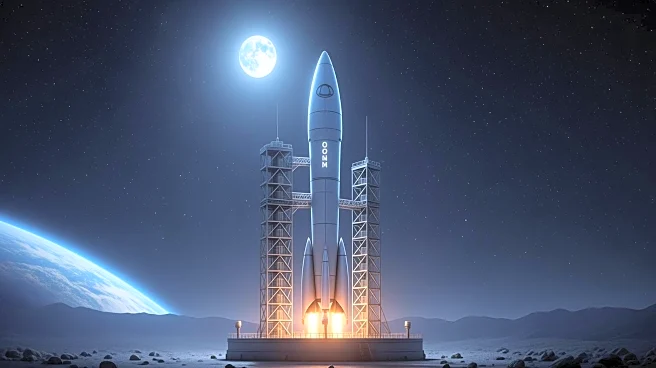What's Happening?
NASA is preparing to launch the ESCAPADE mission, which involves sending twin satellites to Mars to study the planet's atmospheric loss. The mission, part of NASA's SIMPLEx program, is designed to be cost-effective,
with a budget of less than $100 million. The satellites will be launched aboard Blue Origin's New Glenn rocket from Cape Canaveral Space Force Station. The mission will employ a unique 'launch-and-loiter' approach, allowing the spacecraft to reach Mars outside the typical transfer window. This strategy involves the satellites idling at Lagrange Point 2 before heading to Mars, aiming to enter Martian orbit by September 2027.
Why It's Important?
The ESCAPADE mission represents a significant step in NASA's efforts to conduct planetary science on a reduced budget. By utilizing small, innovative spacecraft, NASA aims to achieve high-value scientific outcomes at a fraction of the cost of traditional missions. If successful, ESCAPADE could pave the way for more flexible and cost-effective space exploration strategies. This mission could provide critical insights into Mars' atmospheric history, potentially informing future exploration and colonization efforts. The success of ESCAPADE could also validate the SIMPLEx program's approach, encouraging further investment in low-cost space missions.
What's Next?
Following the launch, the ESCAPADE satellites will spend a year at Lagrange Point 2 before proceeding to Mars. The mission's success could influence future NASA projects, potentially leading to more frequent and affordable planetary missions. Stakeholders, including aerospace companies and scientific communities, will be closely monitoring the mission's progress. The outcome could impact funding and strategic decisions for similar low-cost missions in the future.
Beyond the Headlines
The ESCAPADE mission highlights the growing trend of cost-effective space exploration, challenging traditional notions of space mission budgets. It underscores the importance of innovation in overcoming budgetary constraints and achieving scientific goals. The mission's success could inspire a shift in how space agencies and private companies approach planetary exploration, emphasizing efficiency and adaptability.











